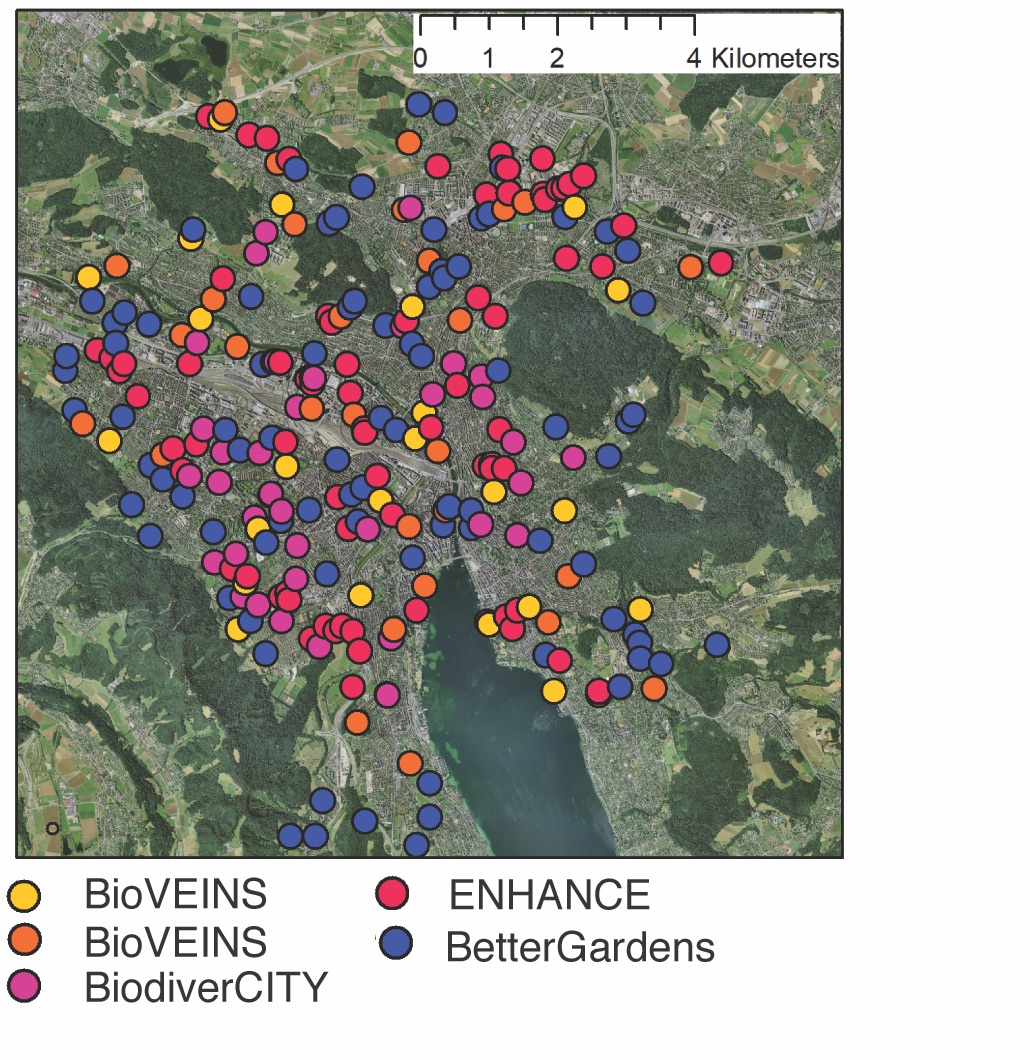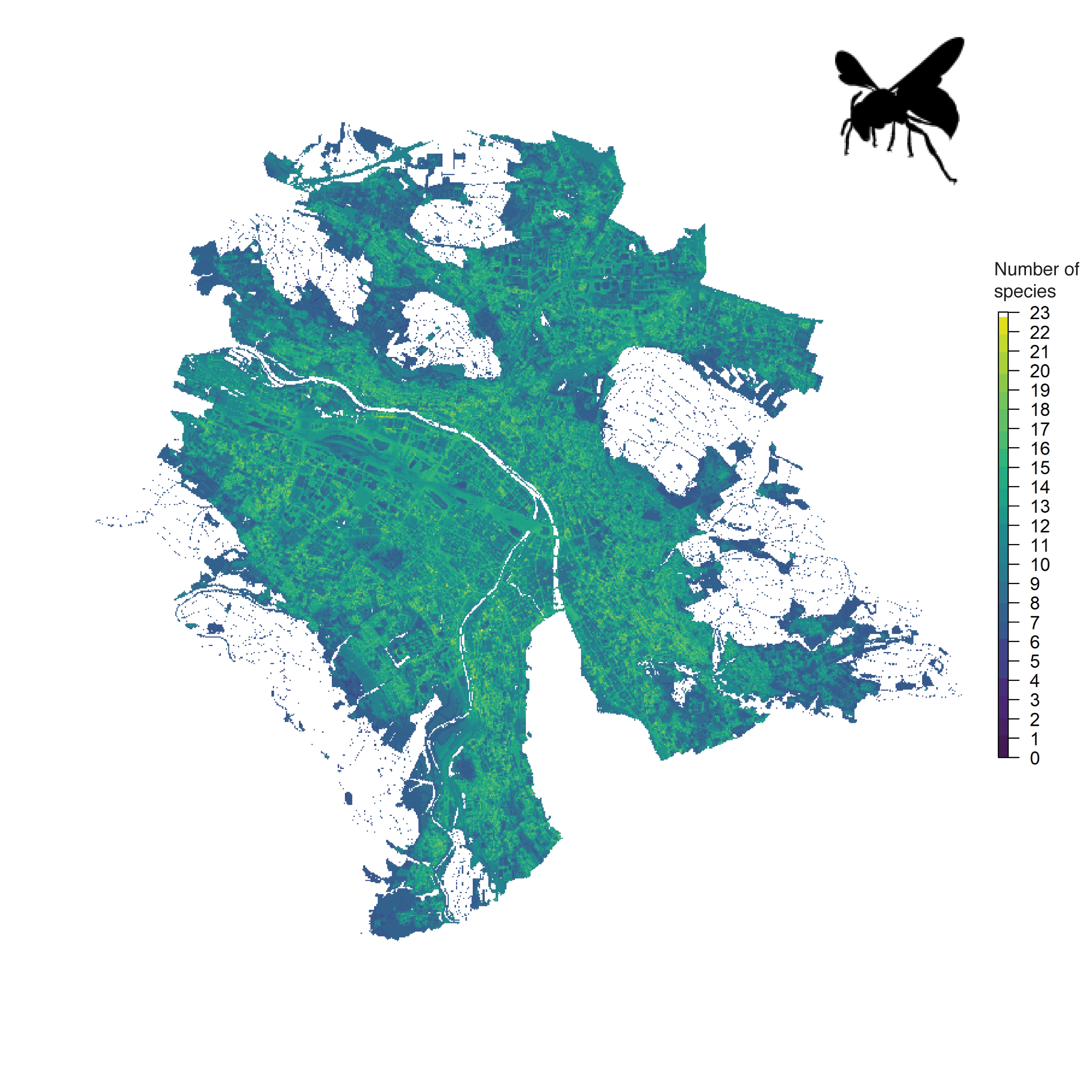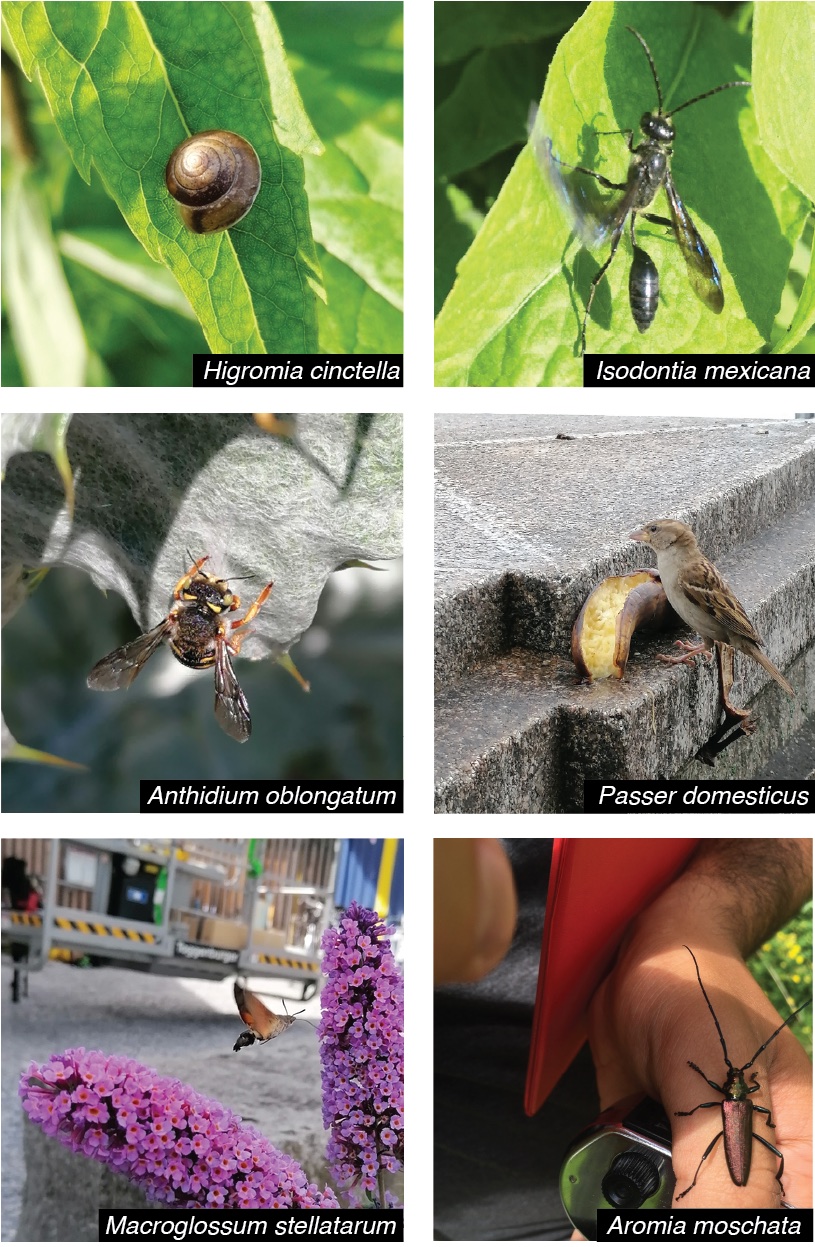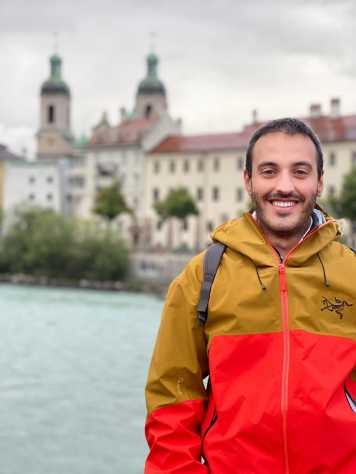ZuriDiverCity
ZuriDiverCity - Applying predictive models in urban ecology
Increasing urbanization worldwide poses threats but also offering opportunities for biodiversity conservation. Although the number of urban ecology studies is increasing, the knowledge on urban biodiversity is still hampered by the difficulty of extrapolating traditional biodiversity point measurements to a larger scale, e.g. a whole city. Predictive models, including species distribution models (SDMs), have proved to be a key tool to solve this shortfall in biodiversity knowledge at studies set at larger spatial scales. However, predictive models have rarely been used in the context of urban areas due to either the lack of sufficient species records or high-quality predictors.

The WSL has sampled during several years the urban biodiversity of the city of Zürich across gradients of urban intensity and in different urban green areas (for instance, private gardens, allotments, parks, cemeteries, green roofs, ruderal areas). This has generated an extensive dataset composed of several taxonomic groups, particularly of less studied invertebrate taxa including millipedes, isopods, worms, snails. In addition, there are a large number of variables describing environmental conditions available for Zurich at a high resolution, such as LiDAR, habitat maps or pollution and climatic models.

ZuriDiverCity aims to further explore the ecological properties of urban ecosystems regarding the distribution of individual species as well as the community attributes (e.g. taxonomic and trait-based metrics), using Zurich as a model city. Specifically, the project aims to: (1) understand the drivers and mechanisms shaping urban biodiversity; (2) map at the city level the distribution of individual species as well as community attributes; (3) uncover potential cold- and hotspots of diversity, and thus city areas of high ecological interest; and, (4) inform planning and management of urban ecosystems to enhance biodiversity, particularly in the face of ongoing external page urban biodiversity strategies and external page climate adaptation.

The project ZuriDiverCity is a collaboration between five WSL research groups, that is, Conservation Biology (Dr. Marco Moretti), Dynamic Macroecology (Yohann Chauvier), Resource Analysis (Dr. Florian Zellweger), Remote Sensing (Christian Ginzler) and Landscape Ecology, and the ETHZ group Landscape Ecology (Prof. Dr. Loïc Pellissier).
Publications
external page Casanelles-Albella et al. (2021). Applying predictive models to study the ecological properties of urban ecosystems: A case study in Zürich, Switzerland. Landscape and Urban Planning, Volume 214, October 2021, 104137.
external page WSL News:Zurich home to some rare species.
